Top 10 Olvy Alternatives in 2025: Collect & Manage Customer Feedback
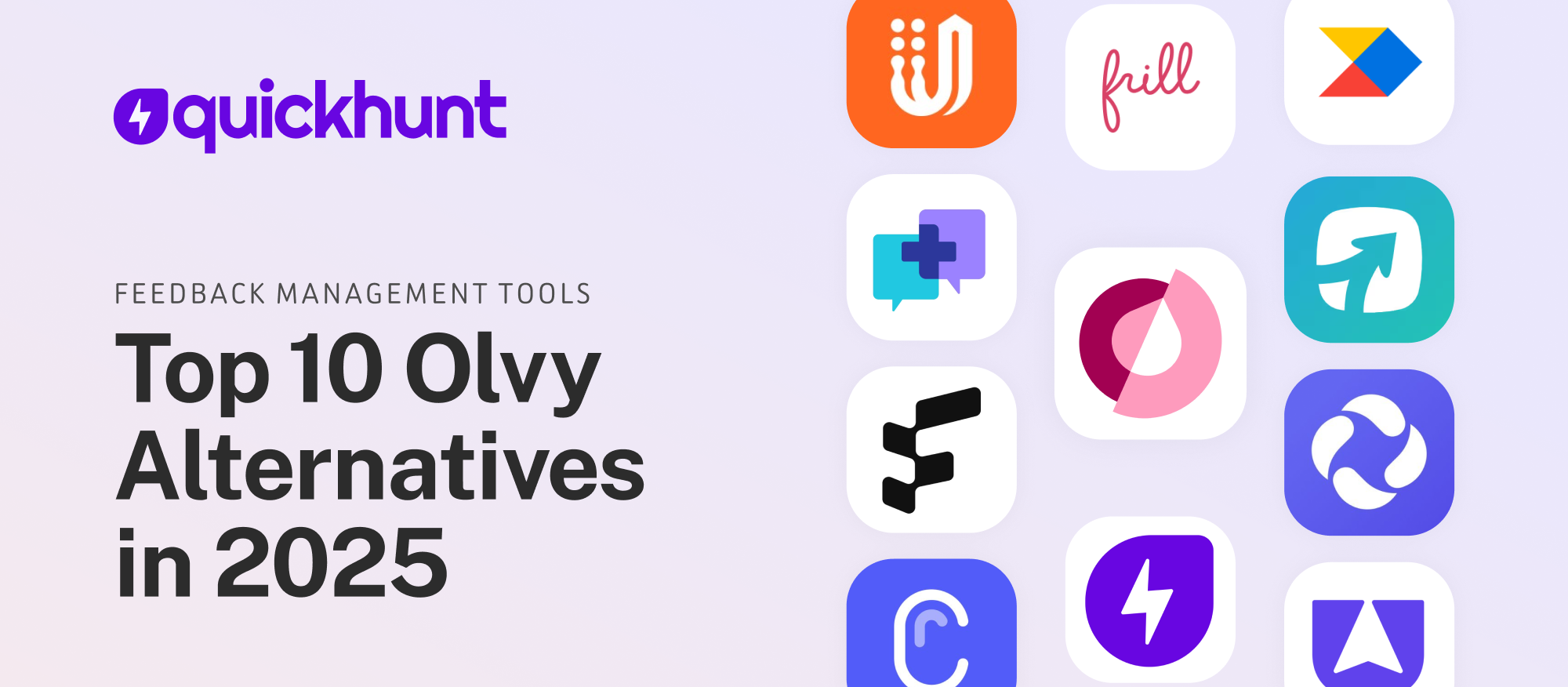
Building great products starts with listening to users. Every successful team pays attention to customer voices, collects ideas, and makes changes based on real needs. Many companies pick Olvy because it offers an easy way to gather feedback and share changelogs. Teams can announce new features, track opinions, and close the loop with users.
As teams grow, feedback becomes larger and more complex. Managers want more than two features. They look for tools that handle everything in one place: collecting suggestions, creating roadmaps, setting priorities, and sending updates. A tool with limited functions no longer supports the complete product journey.
In 2025, many businesses will search for stronger solutions. They explore Olvy alternatives to gain more control, simplify their workflow, and scale with confidence. This blog shares the best options, explains how each tool helps, and shows the difference between them.
What is Olvy?
Olvy helps product teams collect customer feedback and share product updates. The platform gives companies a place to gather ideas, listen to user opinions, and publish changelogs whenever new features go live. It keeps the conversation open between teams and customers in a simple and clear way.
Many small businesses use Olvy because it feels easy to set up and manage. A team can create a feedback board, invite users, and post updates quickly. The clean design makes it simple for both customers and teams to stay connected.
Why look for Olvy alternatives?
Teams often outgrow Olvy once their products reach a larger audience. More customers create more feedback, and the process of handling it grows complex. Product managers start looking for advanced features that Olvy does not provide.
Some teams need a roadmap to show direction and priorities. Others want in-app surveys to ask customers questions inside the product. Many prefer an all-in-one tool where feedback, roadmaps, changelogs, and help docs live together.
Budget also plays a role. Companies want a platform that grows with them without forcing them to buy extra tools. Integrations matter too, since many teams work with tools like Jira, Slack, and GitHub every day.
In short, teams explore Olvy alternatives because they want more power, more options, and better control over the way they manage feedback and product growth.
1. Quickhunt
.png)
Quickhunt provides an all-in-one product feedback management platform that makes product management smoother and faster. AI in Quickhunt helps detect duplicate feedback, create changelogs automatically, and summarize user suggestions to save teams time. Teams can gather customer feedback, prioritize requests, plan roadmaps, run surveys inside the product, and create help documentation efficiently.
Popular Features:
- Feedback collection from multiple channels.
- AI-powered detection of duplicate feedback to avoid repetition.
- Automatic creation of changelogs from updates.
- AI-assisted summarization of user feedback for faster decision-making.
- Roadmap creation and public sharing.
- In-app surveys and messages to engage users.
- Help documentation creation for customers.
Limitations:
- Limited advanced analytics in the free plan.
- Customization options require higher-tier plans.
Quickhunt works perfectly for SaaS teams that want a smart AI-assisted solution for managing feedback, creating changelogs, and summarizing insights efficiently.
2. Canny
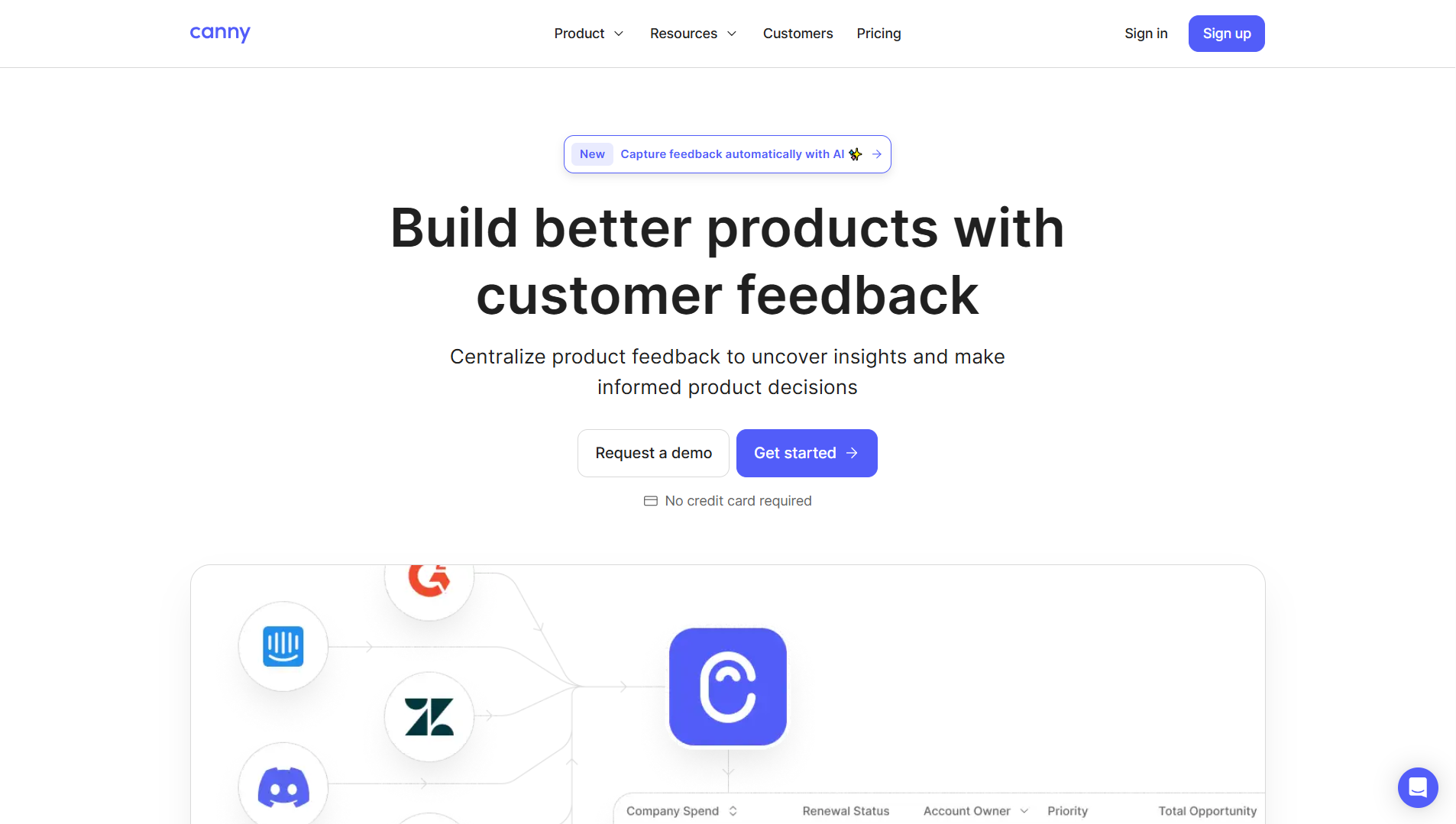
Canny provides a visual feedback board and voting system that helps teams decide which features to build first.
Popular Features:
- Public and private feedback boards.
- Roadmap visualization with progress tracking.
- Changelog announcements for users.
- Integrations with Jira, Slack, and GitHub.
Limitations:
- Pricing increases quickly for larger teams.
- Lacks built-in in-app messaging for surveys.
Canny suits startups and mid-sized companies that want structured feedback and roadmap management. If you’re exploring a Canny alternative, Quickhunt provides a broader set of features, like in-app surveys and documentation.
3. Featurebase
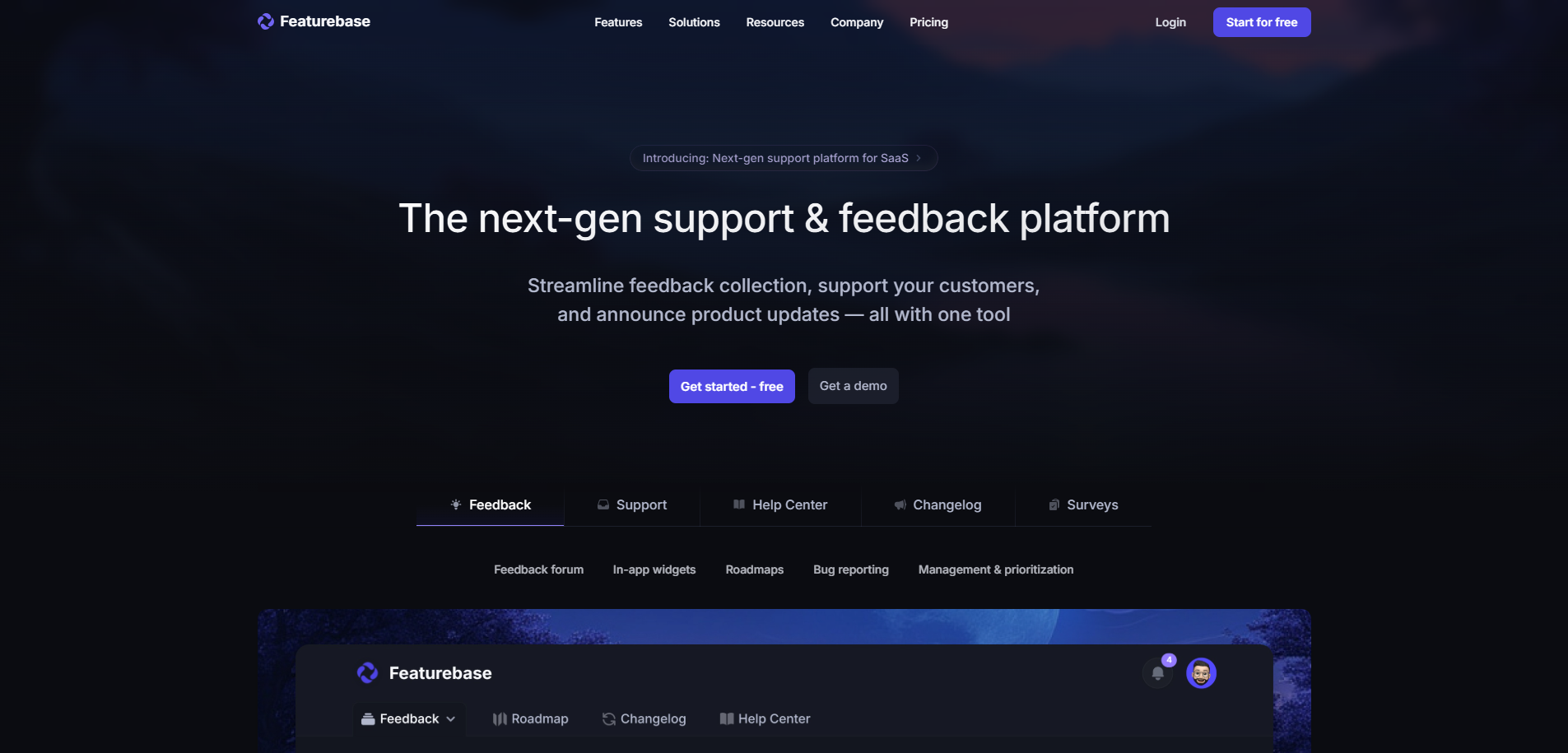
Featurebase emphasizes simplicity and speed. Teams can capture user ideas, prioritize features, and communicate updates effectively. Teams that want a simple Featurebase alternative can consider Quickhunt as a solid option.
Popular Features:
- Easy-to-use feedback portal.
- Prioritization system for feature requests.
- Roadmap creation and sharing.
- Changelog updates to keep users informed.
Limitations:
- Fewer integrations compared to competitors.
- Limited analytics and reporting features.
Featurebase works best for small teams that need a straightforward feedback tool without extra complexity.
4. Rapidr
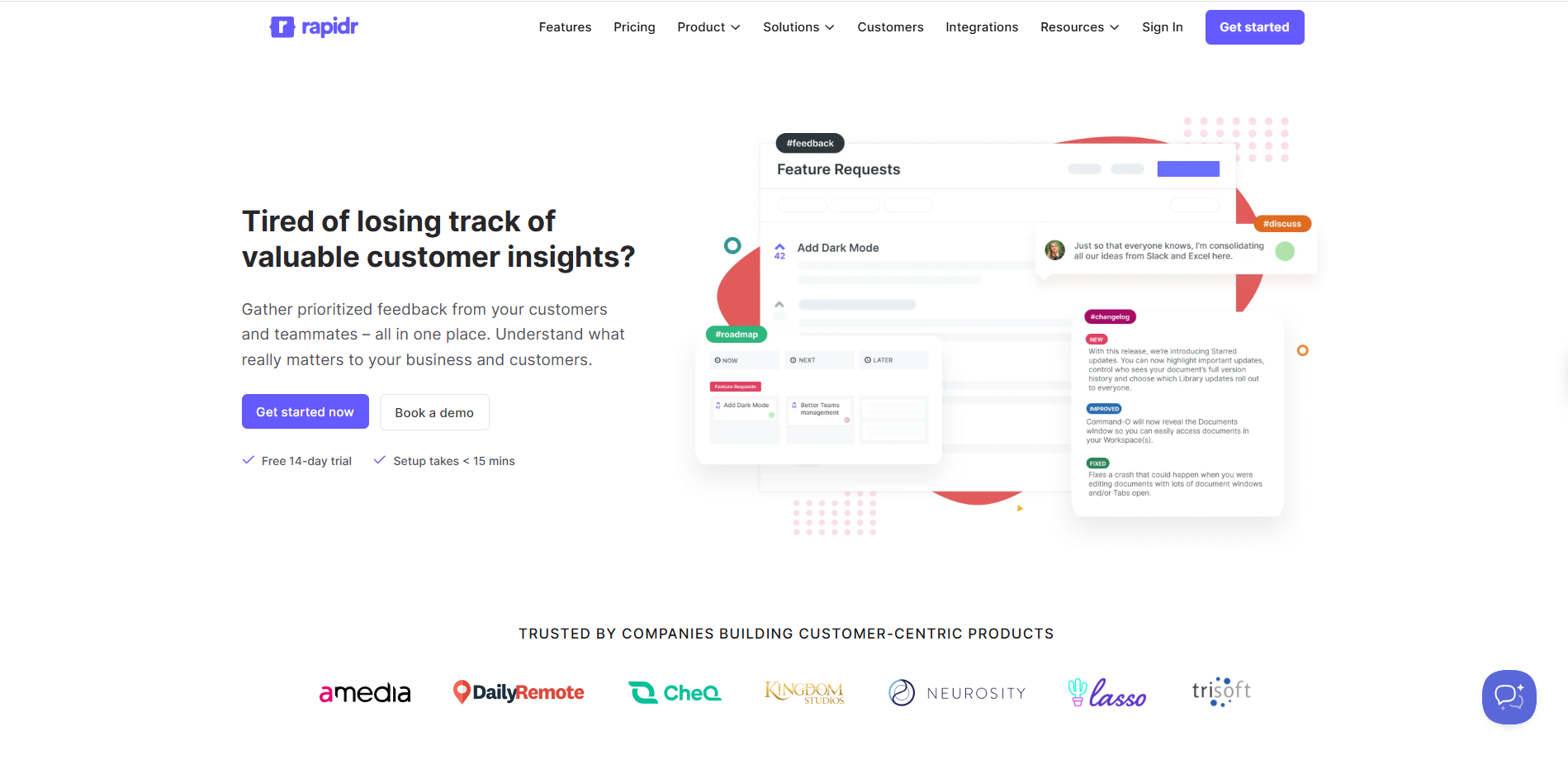
Rapidr allows teams to collect, organize, and act on feedback efficiently. Its focus lies on affordability without losing core features.
Popular Features:
- Feedback boards with voting options.
- Roadmap visualization for product planning.
- Changelog sharing to communicate updates.
- Integration with popular tools like Slack and Jira.
Limitations:
- Limited automation features.
- Less suitable for very large teams with complex needs.
Rapidr serves startups and growing SaaS companies looking for budget-friendly Olvy alternatives.
5. Frill

Frill combines feedback, a product roadmap, and changelogs into a clean and user-friendly interface. Teams can engage customers without overwhelming them. If you’re checking for a Frill alternative, Quickhunt adds more flexibility with in-app messages and help docs.
Popular Features:
- Voting-based feedback collection.
- Public roadmap sharing for transparency.
- Changelog updates for product announcements.
- Embeddable widgets for websites or apps.
Limitations:
- Limited customization for enterprise branding.
- Lacks advanced reporting and analytics.
Frill suits teams that want simplicity, clean design, and easy communication with users.
6. UserVoice
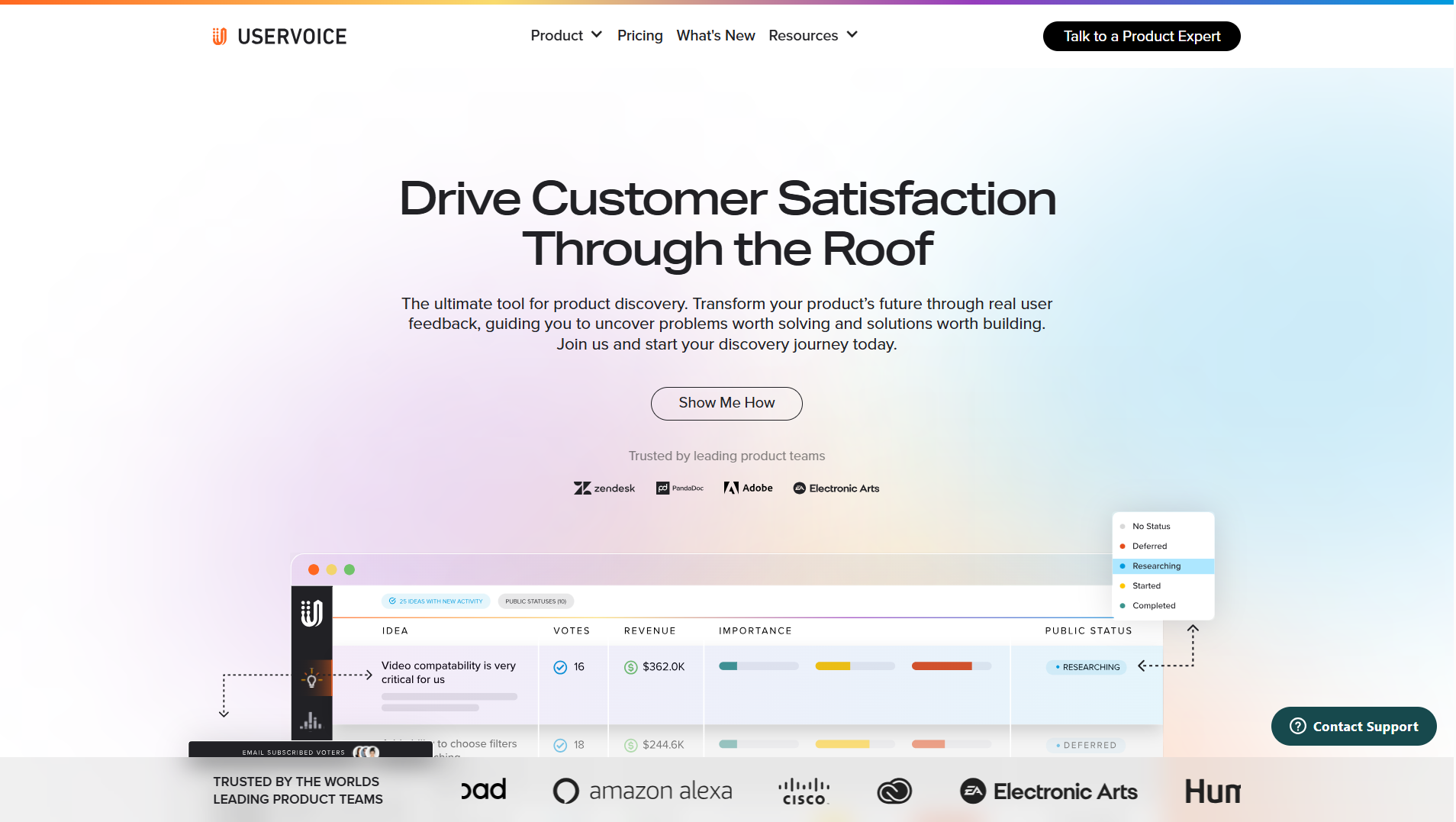
UserVoice targets enterprise teams with advanced feedback management. Companies gain insights to make data-driven decisions.
Popular Features:
- Enterprise-grade feedback collection.
- Prioritization tools to focus on the most requested features.
- Roadmaps and changelogs to communicate updates.
- Detailed analytics for tracking trends and requests.
Limitations:
- Complex interface for new users.
- Higher pricing than smaller alternatives.
UserVoice fits large companies needing strong analytics and structured feedback workflows.
7. ProdPad
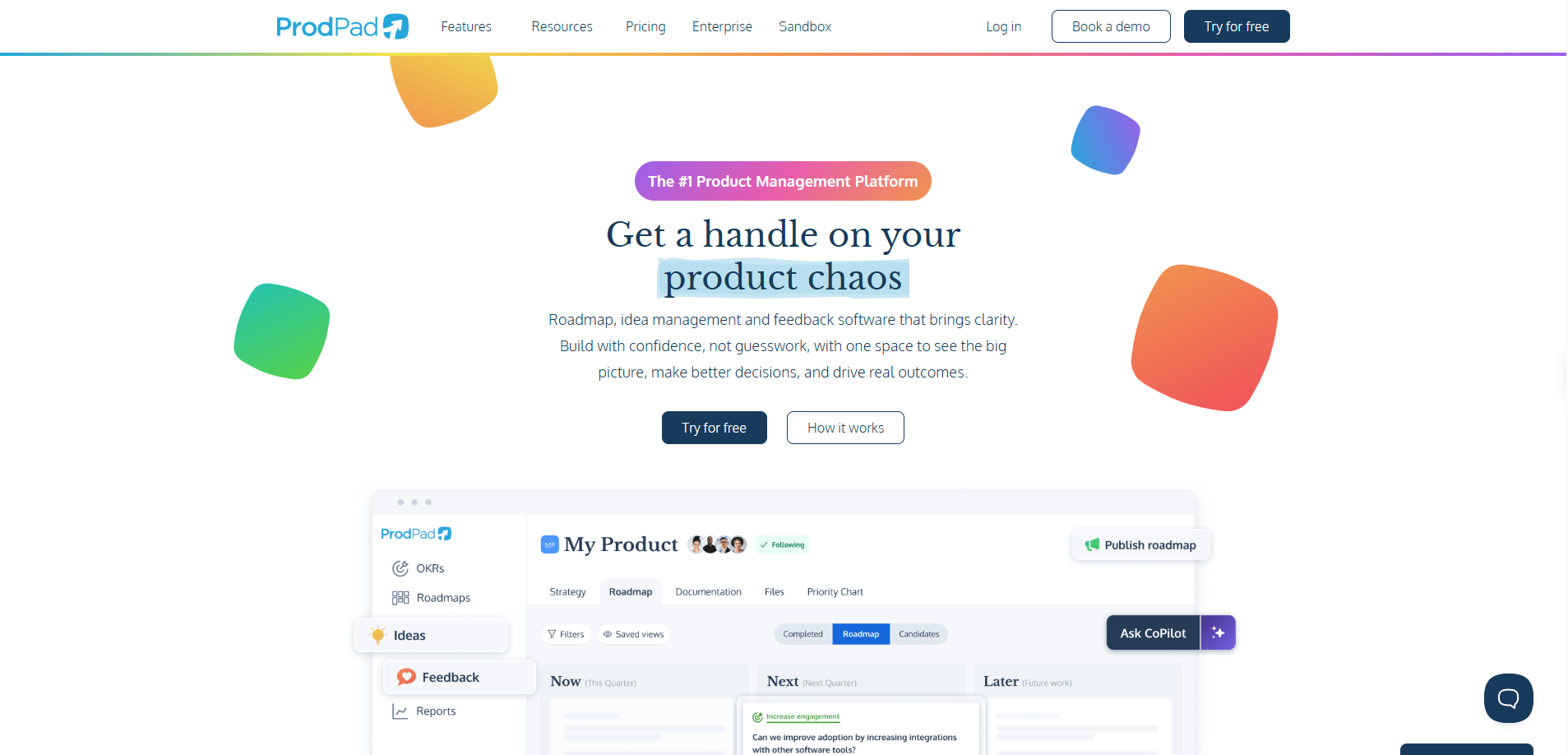
ProdPad focuses on product strategy and idea management. Teams can capture ideas, align them with feedback, and plan future features.
Popular Features:
- Idea management boards to collect and organize concepts.
- Customer feedback boards for product decisions.
- Roadmap planning to visualize progress.
- Integrations with project management tools.
Limitations:
- Learning curve for beginners.
- Advanced features only available in premium plans.
ProdPad works for teams that want strategic control over product development.
8. Userback
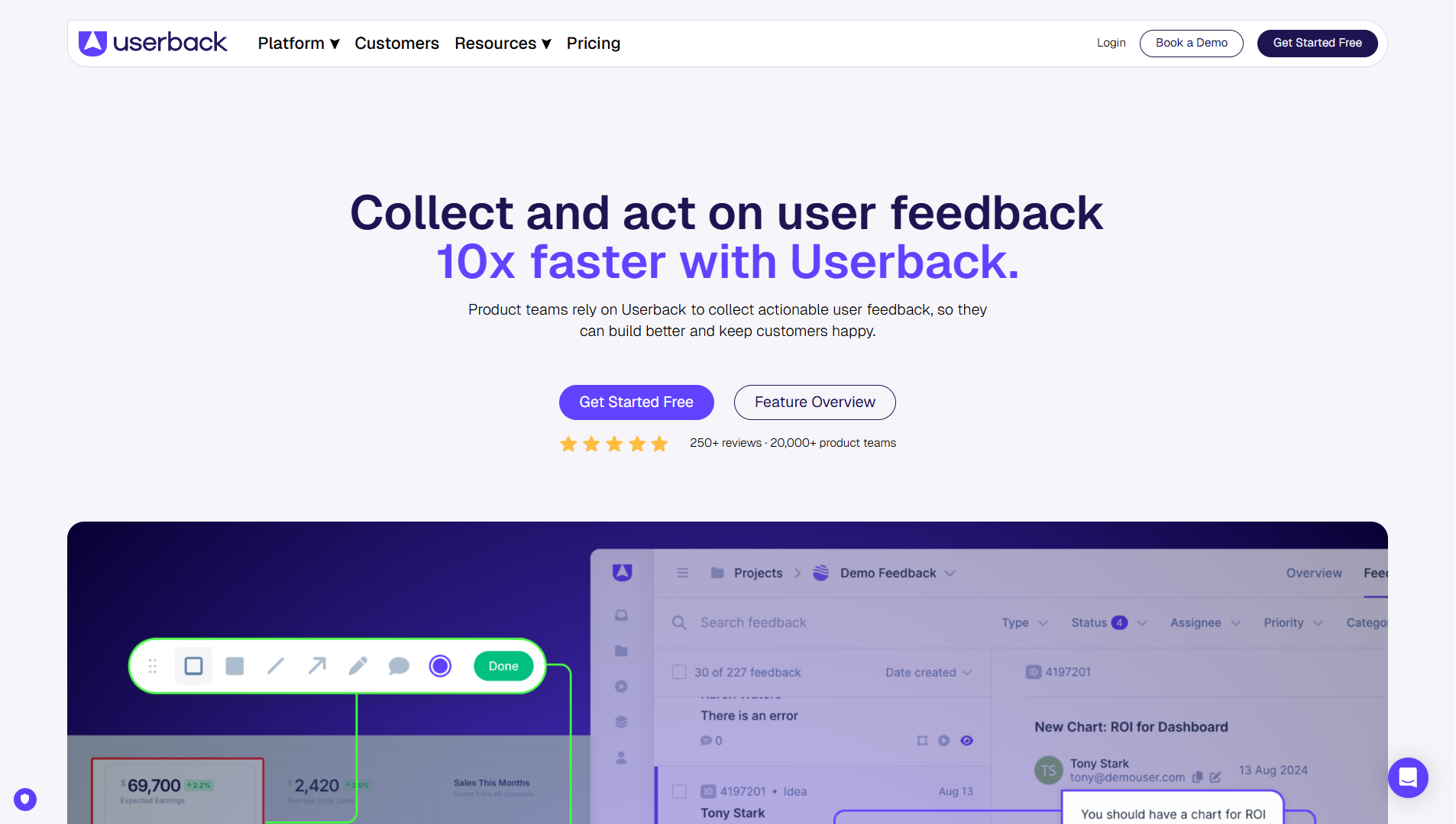
Userback provides visual feedback for design and bug reporting. Users can send screenshots, screen recordings, and comments directly from the product.
Popular Features:
- Visual feedback capture.
- Collaboration tools for team communication.
- Integration with development and project tools.
- User-friendly interface for quick feedback collection.
Limitations:
- Limited roadmap and planning features.
- Less suitable for teams needing full product management.
Userback suits design-heavy projects or teams needing visual context for user feedback.
9. Productboard
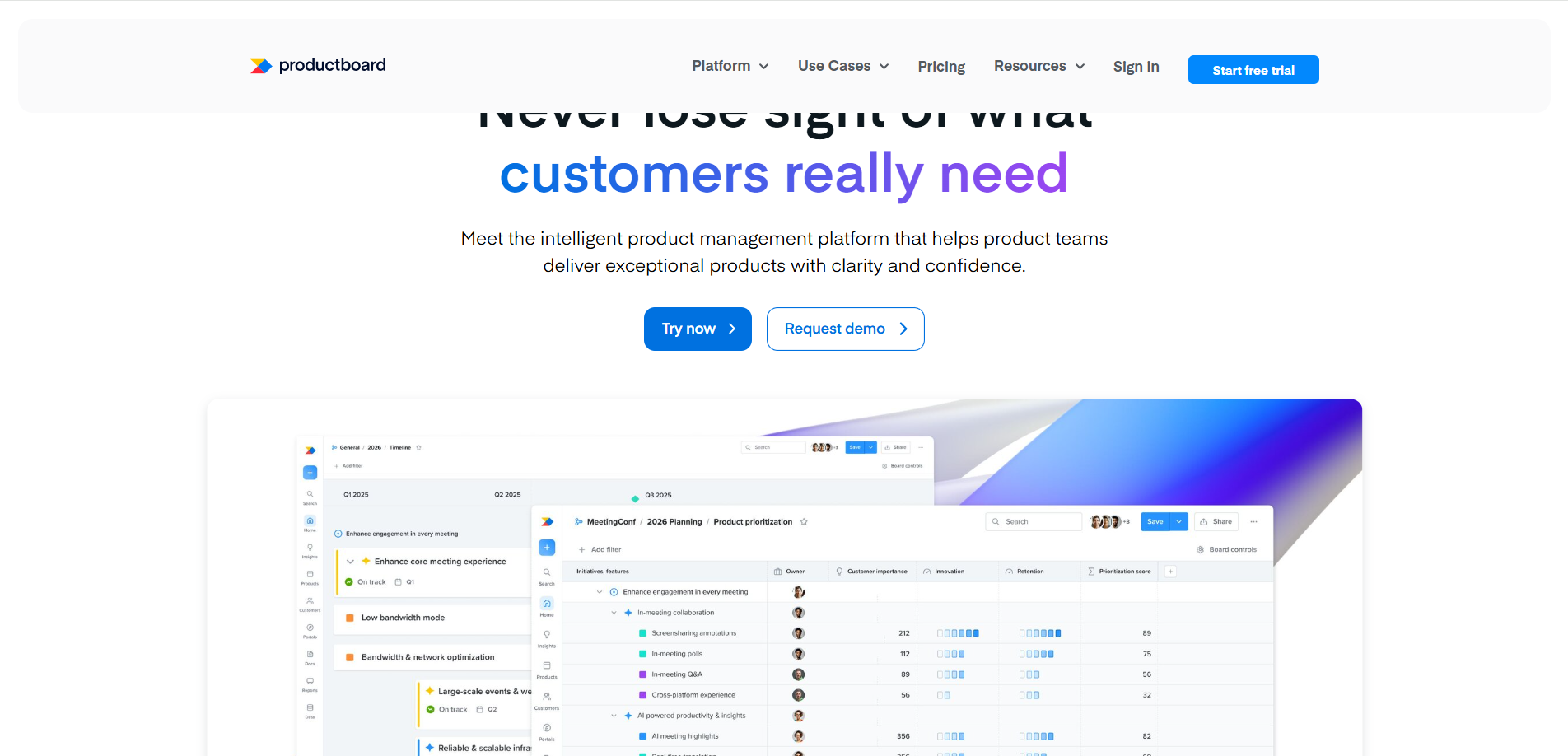
Productboard helps teams align product strategy with customer needs. It combines feedback, prioritization, and roadmaps in a single platform. For teams needing simplicity, Quickhunt can be considered a Productboard alternative.
Popular Features:
- Centralized feedback collection from multiple sources.
- Prioritization tools using scoring and metrics.
- Roadmap visualization for planning.
- Integrations with Jira, Slack, and other tools.
Limitations:
- Expensive for small teams or startups.
- Can feel overwhelming for simple product setups.
Productboard fits medium to large teams that require strategic planning and detailed prioritization.
10. FeaturesOS

FeatureOS focuses on feedback collection, roadmaps, and changelogs in a simple platform. It provides core features without unnecessary complexity.
Popular Features:
- Feedback boards with voting options.
- Roadmap planning and sharing.
- Changelog updates for transparency.
- Affordable pricing plans for growing teams.
Limitations:
- Limited integrations with third-party tools.
- Lacks advanced analytics and reporting features.
FeatureOS works for teams that need a clean, focused, and affordable Olvy alternative.
Choosing the right tool becomes easier when you compare features side by side. These tools will show how the top Olvy alternatives in 2025 collect feedback, create roadmaps, publish changelogs, run in-app surveys, and create help documentation. Quickhunt stands out as the only all-in-one solution, while most others focus mainly on feedback and changelog features.
Which Olvy Alternative Is Right for You?
Quickhunt brings everything into one place for product teams. The platform collects customer feedback from multiple channels, organizes requests, and uses AI to remove duplicates. This makes feedback easy to understand and saves time for the team.
Roadmap planning feels simple with Quickhunt. Teams can prioritize requests automatically, create clear product roadmaps, and share them with customers. Changelog creation also becomes faster with AI support, which helps in writing updates and keeping users informed without extra effort.
Quickhunt also includes in-app surveys, customer messages, and help docs. Teams can connect with users inside the product, run short surveys, and guide customers with clear documentation. AI adds value with feedback summarization and changelog drafts, giving product managers more time to focus on building features instead of writing.
Ready to Manage Feedback Smarter?
Take control of feedback, roadmaps, and changelogs in one place. Quickhunt gives your team everything needed to build products faster and keep customers happy.
Conclusion
Olvy helps with feedback and changelogs, but many teams need more. Quickhunt gives one complete platform with feedback, a roadmap, a changelog, surveys, and docs in one place. Canny, Featurebase, Rapidr, and Frill work well for teams that focus only on feedback and updates. UserVoice, ProdPad, and Productboard fit companies with bigger teams and more complex planning needs. Userback supports design teams with visual input, and FeatureOS builds stronger community-driven feedback.
The right tool depends on team size, goals, and workflow. A small startup may need an all-in-one tool like Quickhunt, while large companies may go with Productboard or UserVoice. Each option offers clear value, so every team can find a platform that makes product management easier and faster.
Start Your 7-Day Free Trial Today
Use Quickhunt to collect customer feedback, plan your product roadmap, and share updates with built-in changelog tools. No coding is needed, just simple steps and fast value.


.svg)


